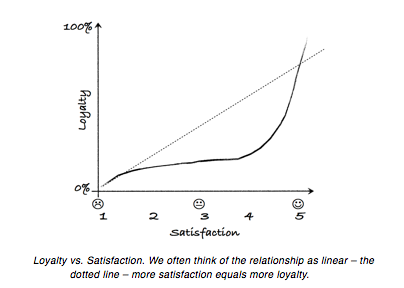 We talk a lot about the customer experience. We even talk about an experience economy. But what do we actually mean, and when can we qualify something as an experience?
We talk a lot about the customer experience. We even talk about an experience economy. But what do we actually mean, and when can we qualify something as an experience?
Firstly, let be clear. Everything is an experience. Unless we have managed to shut down every sensor in our system, we will be experiencing something. The challenge is that experiences come in three broad categories: God, bad and indifferent. Most of your experiences belong to the last category – indifferent. If I ask you ‘So how was your train commute this morning compared to the same Monday last year?’, you would probably give me a rather blank stare.
This Monday last year? Sorry, I can’t remember at all what that was like.
Why not? Because the experience was bland, it was no different from all your other morning commutes. To put in very simple terms, there was no emotional trigger.
What makes us remember one experience and not the other depends on to what degree our emotions were stirred. Remember your first teenage date? Most of us do. Or the birth of your first child? The stronger the emotion, positive or negative, the more the experience is etched into our memory.
So most of our experiences are quickly forgotten. There is no emotional trigger. What we retain are the negative and the positive experiences.
So what do we mean by positive and negative in this context? Do I need to bring in a 12 man Mariachi band for this wedding party to be successful or would a 3 piece Jazz trio work just as well or better?
It’s not about the ‘thing’.
It’s about the customer and their perception of what is going on. You see, what causes a shift in our emotional makeup is tied to shifts in the circumstances that we happen to be in. When circumstances change to the better (compared to what we expected), then we are slightly happier; if they shift to something much better than we expected, we are very happy. On the other hand, if they shift to something worse than we expected, we are miserable. And if everything is running exactly as we thought it would, we are … indifferent.
Once we understand this, we have a great design tool at our disposal. We need to work on managing expectations. So standing in a queue at the airport security for 10 long minutes is hell on earth if you thought you would be through in a breeze; but it’s actually not too bad if there is a sign that says from this point on just 10 more minutes, and if we then get through in 8 minutes is actually a good experience.
In most types of customer journeys, there will be things that need to happen that may not be easy to frame as positive. Queuing is one, having a tooth fixed at the dentist might be another. It is not always possible to turn negative experiences into something positive but we can often neutralise them by putting the customer more in control, helping them set their expectations. So my dentist will say ‘In a moment I am going to do this. It might be a bit painful but it’s quick and you will feel much better afterward.’ Now I know what to expect. Ouch! It happens exactly as she said, so no shift in my emotions. Then she finishes up and we have a little chat about my last vacation and what I plan to do next weekend. She is such a nice lady. And there you go. The negative aspect was neutralised and she ended on a positive note making a personal connection: Man I just love going to the dentist.
So if you want to design a great experience, you need first to map out the customer journey, touch points by touch points. Then you make a note, for this type of customer persona, would this be considered positive, neutral or negative? Then, make a plan to eliminate or neutralise the negatives, upgrade a few of the neutrals to positive and make sure that whatever else happens, you end the experience on a positive note. Nothing affects our emotional state as much as the way things end. A movie that ends on an unhappy note is rarely a success. It just doesn’t work.
And finally, what is the one thing we can always do that consistently exceeds our customers’ expectations at any touch point? Be nice and make a personal connection. It blows them away.
This blog post is part of a series of answers to frequent questions that I get around the concept of the Service Profit Chain. In future’s posts, we will continue to explore other key points. If you would like the full concept served up in one go, you will find Mike’s book “Best! No need to be cheap if…” HERE.

